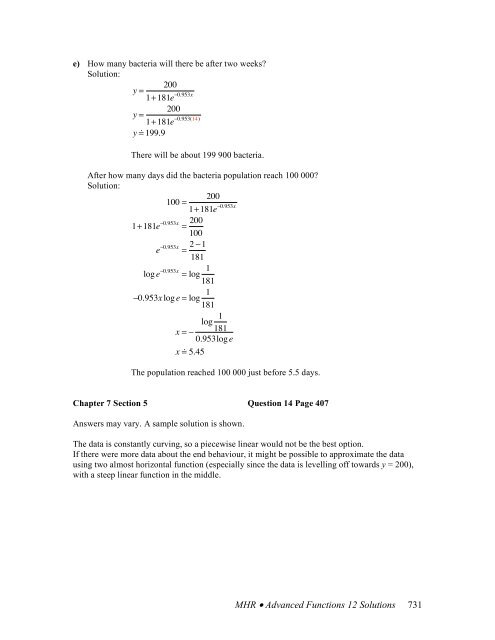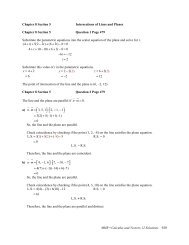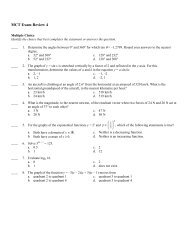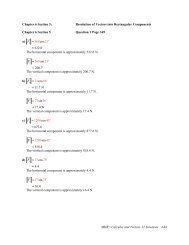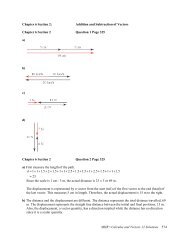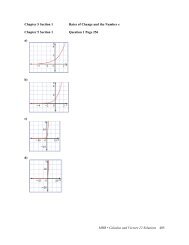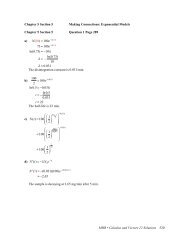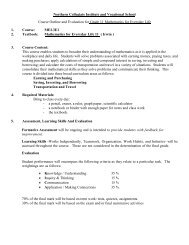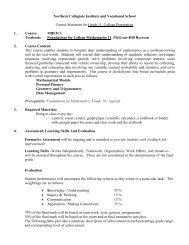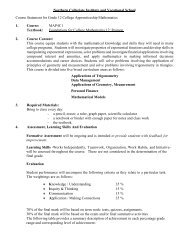MHR • Advanced Functions 12 Solutions 660
MHR • Advanced Functions 12 Solutions 660
MHR • Advanced Functions 12 Solutions 660
Create successful ePaper yourself
Turn your PDF publications into a flip-book with our unique Google optimized e-Paper software.
e) How many bacteria will there be after two weeks?<br />
Solution:<br />
200<br />
y =<br />
1+181e !0.953x<br />
200<br />
y =<br />
1+181e !0.953(14)<br />
y &= 199.9<br />
There will be about 199 900 bacteria.<br />
After how many days did the bacteria population reach 100 000?<br />
Solution:<br />
200<br />
100 =<br />
1+181e !0.953x<br />
1+181e !0.953x = 200<br />
100<br />
e !0.953x = 2 !1<br />
181<br />
log e !0.953x = log 1<br />
181<br />
!0.953x log e = log 1<br />
181<br />
log 1<br />
x = !<br />
181<br />
0.953log e<br />
x &= 5.45<br />
The population reached 100 000 just before 5.5 days.<br />
Chapter 7 Section 5 Question 14 Page 407<br />
Answers may vary. A sample solution is shown.<br />
The data is constantly curving, so a piecewise linear would not be the best option.<br />
If there were more data about the end behaviour, it might be possible to approximate the data<br />
using two almost horizontal function (especially since the data is levelling off towards y = 200),<br />
with a steep linear function in the middle.<br />
<strong>MHR</strong> <strong>•</strong> <strong>Advanced</strong> <strong>Functions</strong> <strong>12</strong> <strong>Solutions</strong> 731


